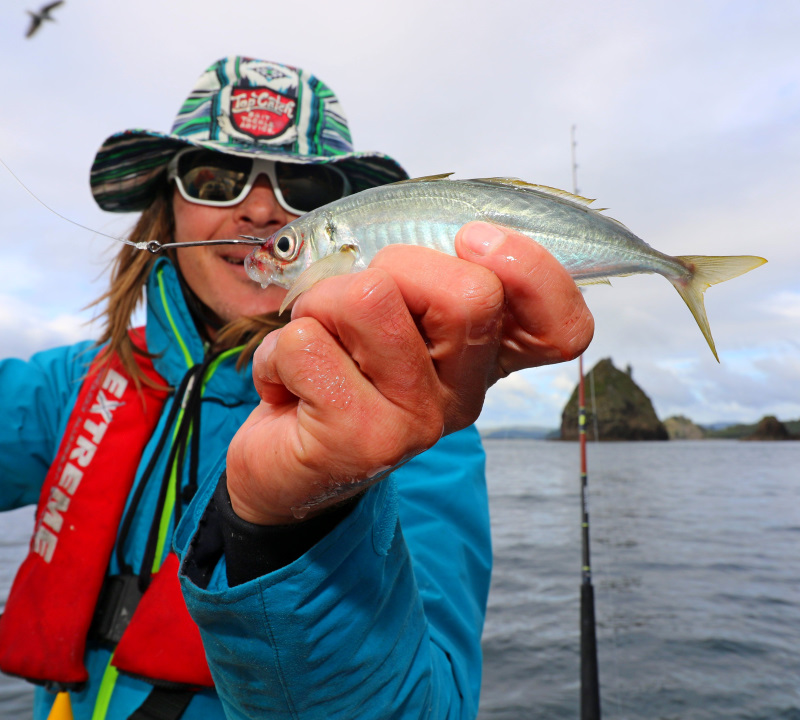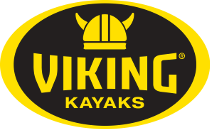Live Bait Fishing For Kingfish
5:31PM 19th Apr 17

The simplicity of live baits
This kayak fishing report from Stephen Tapp and Milan from Big Angry Fish, covers the simple and effective technique of live bait fishing for kingfish from the Kayaks and how the Viking Profish tackle pod system can help you land the fish your targeting.
As with all great fishing stories it all begins with a short notice phone call from a mate…
Milan “want to target some kings tomorrow?” - ..no reply needed, mad scramble to assemble the Profish Reload kayak and accessories, make sure batteries were charged, and to grab essential tackle…wait…
Stephen “what tackle do I need”?
Milan’s straight forward response to my request for a tackle list: “keep it simple, 15kg mono and a handful of 8/0 Mustad Penetrators, and don’t forget a couple of sabiki’s to catch the macks”. Surely it couldn’t be as simple as that; where were the balloons, bait cotton, 100lb fluorocarbon leader, ball bearing swivels, rigging needles, fancy hooks? Surely we had to carry jig rigs and a bundle of trolling lures?
It quickly became apparent this was going to be a fishing trip without distractions. The focus was going to be on a proven game getter for this location, jack mackerel live baits, and the tackle reflected this. The morning’s goal was simply to bring back a nice sized kingfish to share with the crew at work and have a bit of fun doing it. The result: a remarkably short tackle list and a quick pre-dawn setup on the beach.
The Live Bait Rig
This was the rig doing the damage, light 30lb leaders and fine gauge hooks so the small mackerel could still swim freely.

The rig we were using at Milan’s suggestion is incredibly simple, in my case 15kg mono as the main line, a 10m length of similar weight fluorocarbon for a bit of extra abrasion resistance (and a hint to how far away my livey was swimming), and a fine gauge 8/0 Mustad Penetrator snelled to the very end. The idea behind this lightweight rig is that it doesn’t burden the live baits too much so they don’t tire too quickly. To compensate for the lack of heavy gear we would use the nimbleness of fishing from kayaks to land the kings – hopefully!
Paddling out in the dark is always an interesting experience, especially when launching in an unfamiliar area. Not even the vaguest hint of light on the horizon provided guidance so it was a case of trusting the chart plotters and navigating the flat waters. Profish Tackle Pods fitted with good electronics makes all the difference.
Starting to pack up tight this massive mackerel school was starting to show the presence of hungry kings. Now totally off the bite it was impossible to catch another livey, but those in the tanks would be enough for the job.

After an hour of cruising along, and right on cue, the mackerel showed up on the sounders. Not just the usual loose patches of feeding bait, but one massive school stretching almost the entire 15 meter water column and covering a huge area.
Sabiki’s were quickly rigged and deployed, and the first live baits started coming aboard. It didn’t take long to get a dozen in the tank, and with the pump quietly purring away it was time to send the first baits back. Now to patiently await the hoodlum arrival.
A live bait tank nicely filled with mackerel to last the session. These need to be caught while they’re still feeding, and before the predators turn up.

Milan was the first to see action, after slowly trolling behind his bait suddenly went into panic mode. A quick yell to get my attention as he fed a little line to the wary fish, followed by a rapid wind and lift to stretch the mono and drive the hook home; this was one of the most efficient hookups I’d seem in a while! Now I had the fun of getting my bait back in the tank while watching the comedy of Milan struggling to get the Viking Profish Reload over top of the fish.
Hooked up and being dragged bodily sideways, the main goal of the first part of the battle is to try and stay on top of the fish and get line angles more vertical

With this kind of battle it’s critical to reduce line angles as quickly as possible and try to stay on top of the fish. Once there it’s much harder for the king to wrap you up on structure and kelp, even in the relatively shallow conditions we were fishing. At this point drag pressures can be increased as high as you dare and I had great delight in watching Milan being dragged bodily sideways and railed by a feisty fish.
In typical king fashion it was “never say die” right to the end. There were a few tense moments with the fish taking a detour through some kelp, but good rod work and the mobility of the kayak meant it didn’t take too long to have a fat chunk of green and gold at the surface. Relatively light gear, the simplest of rigs and a tank of live baits had done the job!
Success, now it’s a matter of getting the kingfish aboard before it wakes up again!

The “Livey Pod”
One essential piece of equipment is a system to keep your live baits in top condition. The system I like best is a flow through live bait tank. This keeps a constant supply of sea water flooding into the bottom of the tank with overflow drains letting water escape from the top. This keeps live baits properly oxygenated, flushes away the wastes they produce, and keeps the water they’re in at the same temperature as the ocean they’re to be released into. This reduces the potential for shock and makes for much livelier baits when they deployed.
After playing with many systems I decided to convert one of my Reload Tackle Pods to a live bait tank, what has now become the “Livey Pod” that Milan and I used during the session above. Although I’ve lost my prime tackle storage I now have a live bait tank in front of me where it’s within easy reach. Live baits are dropped from the hooks into the tank without handling, and can be recaptured with a minimum of stress (in fact open the lid of the dark pod and they come straight to the light, right into your hand).
The heart of the “Livey Pod” system, a simple pump mounted inside with the intakes above the transducer. The low position ensures the system is self-priming, and the overflow design keeps baits in top condition
The pump intake is inside the transducer socket at the bottom of the Pod.

Critically for those of us with a passion for fishing in a variety of conditions, having the live bait tank mounted low in the cockpit ensures there’s no impact on kayak stability. By mounting the pump inside the Tackle Pod with the intake above the transducer the system becomes fully self-priming. With batteries carried inside the front hatch we now have a live bait tank system that allows us to paddle the distances needed to target all manner of game and sport fishing species.
Other articles you might like...
Want more kayak fishing tips? Check out other articles and advice from local experts in our BLOG HERE






